
The Kuomintang (KMT), also referred to as the Guomindang (GMD), the Nationalist Party of China (NPC) or the Chinese Nationalist Party (CNP), is a major political party in the Republic of China, initially based on the Chinese mainland and then in Taiwan since 1949. The KMT is a centre-right to right-wing party and the largest in the Pan-Blue Coalition. Its primary rival is the Democratic Progressive Party (DPP) and its allies in the Pan-Green Coalition. As of 2024, the KMT is the largest single party in the Legislative Yuan. The current chairman is Eric Chu.

Taiwan, officially the Republic of China (ROC), is governed in a framework of a representative democratic republic under a five-power system first envisioned by Sun Yat-sen in 1906, whereby under the constitutional amendments, the President is head of state and the Premier is head of government, and of a multi-party system. Executive power is exercised by the Executive Yuan. Legislative power is vested primarily in the Legislative Yuan. The judiciary is independent of the executive and the legislature. In addition, the Examination Yuan is in charge of validating the qualification of civil servants, and the Control Yuan inspects, reviews, and audits the policies and operations of the government.

The Chinese Civil War was fought between the Kuomintang-led government of the Republic of China and the forces of the Chinese Communist Party (CCP), with armed conflict continuing intermittently from 1 August 1927 until 7 December 1949, resulting in a CCP victory and control of mainland China in the Chinese Communist Revolution.
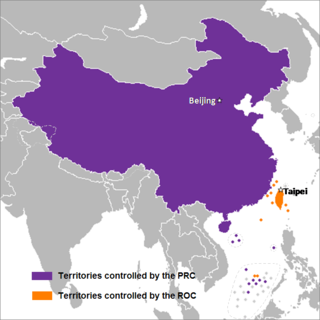
Chinese unification, also known as Cross-Strait unification or Chinese reunification, is the potential unification of territories currently controlled, or claimed, by the People's Republic of China and the Republic of China ("Taiwan") under one political entity, possibly the formation of a political union between the two republics. Together with full Taiwan independence, unification is one of the main proposals to address questions on the political status of Taiwan, which is a central focus of Cross-Strait relations.
The term One China may refer, in alphabetical order, to one of the following:
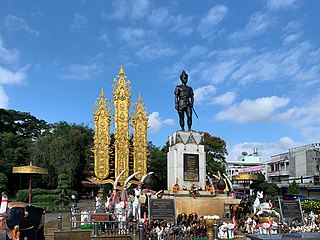
Chiang Rai is one of Thailand's seventy-six provinces, which lies in upper northern Thailand and is Thailand's northernmost province. It is bordered by the Shan State of Myanmar to the north, Bokeo province of Laos to the east, Phayao to the south, Lampang to the southwest, and Chiang Mai to the west. The provinces is linked to Houayxay Laos by the Fourth Thai–Lao Friendship Bridge that spans the Mekong.
The history of the Republic of China began in 1912 with the end of the Qing dynasty, when the Xinhai Revolution and the formation of the Republic of China put an end to 2,000 years of imperial rule. The Republic experienced many trials and tribulations after its founding which included being dominated by elements as disparate as warlord generals and foreign powers.
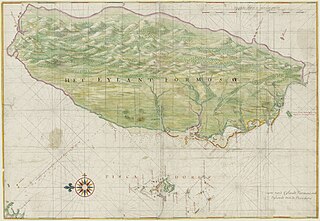
As a result of the surrender and occupation of Japan at the end of World War II, the islands of Taiwan and Penghu were placed under the governance of the Republic of China (ROC), ruled by the Kuomintang (KMT), on 25 October 1945. Following the February 28 massacre in 1947, martial law was declared in 1949 by the Governor of Taiwan, Chen Cheng, and the ROC Ministry of National Defense. Following the end of the Chinese Civil War in 1949, the ROC government retreated from the mainland as the Chinese Communist Party (CCP) proclaimed the establishment of the People's Republic of China. The KMT retreated to Taiwan and declared Taipei the temporary capital of the ROC. For many years, the ROC and PRC each continued to claim in the diplomatic arena to be the sole legitimate government of "China". In 1971, the United Nations expelled the ROC and replaced it with the PRC.
Censorship in Taiwan was greatly relaxed when the state moved away from authoritarianism in 1987. Since then, the media has generally been allowed to broadcast political opposition. Today, the focus of censorship is slander and libel, cross-Strait relations, and national security.

Mae Salong, officially known as Santikhiri, is a village in the Thai highlands on Doi Mae Salong mountain of the Daen Lao Range, in Mae Fa Luang District, Chiang Rai Province, the northernmost province of Thailand. The area has an alpine-like landscape and climate, and is known for its hill tribe villages, tea plantations, and cherry blossoms.

The Kuomintang (KMT) is a Chinese political party that ruled mainland China from 1927 to 1949 prior to its relocation to Taiwan as a result of the Chinese Civil War. The name of the party translates as "China's National People's Party" and was historically referred to as the Chinese Nationalists. The Party was initially founded on 23 August 1912, by Sun Yat-sen but dissolved in November 1913. It reformed on October 10, 1919, again led by Sun Yat-sen, and became the ruling party in China. After Sun's death, the party was dominated from 1927 to 1975 by Chiang Kai-shek. After the KMT lost the civil war with the Chinese Communist Party in 1949, the party retreated to Taiwan and remains a major political party of the Republic of China based in Taiwan.

Li Mi was a high-ranking Nationalist general who participated in the anti-Communist Encirclement Campaigns, Second Sino-Japanese War and Chinese Civil War. He was one of the few Kuomintang commanders to achieve notable victories against both Chinese Communist forces and the Imperial Japanese Army. Following the founding of the People's Republic of China in 1949, he withdrew his forces to Burma and Thailand, where he continued to carry out guerrilla raids into Communist-held territory.

The Kuomintang Islamic insurgency was a continuation of the Chinese Civil War by Chinese Muslim Kuomintang Republic of China Army forces mainly in Northwest China, in the provinces of Gansu, Qinghai, Ningxia, and Xinjiang, and another insurgency in Yunnan.

The Republic of China (ROC), or simply China, was a sovereign state based on mainland China from 1912 to 1949 prior to the government's relocation to Taiwan, where it continues to be based today. The ROC was established on 1 January 1912 during the Xinhai Revolution against the Qing dynasty, ending the imperial history of China. The Republican government was ruled by the Kuomintang (KMT) as a one-party state based in Nanjing from 1927, until its flight to Taipei on 7 December 1949 following the KMT's de facto defeat by the Chinese Communist Party (CCP) in the Chinese Civil War. The CCP proclaimed the People's Republic of China on 1 October 1949, while the ROC retains control over the "Free Area", with the political status of Taiwan remaining in dispute to this day.

Doi Mae Salong is a hill of Dan Lao range in Chiang Rai province, Thailand 6 km. from the border with Burma. This mountain rises in Mae Fa Luang District. Its summit is near the town of Santikhiri which is built on the ridge. The height of this hill is about 950–1200 meters and the area is around 115.26 square meters. It is ~886 kilometers away from Bangkok. The town is largely inhabited by ethnic Chinese originating from settlement by the paramilitary remnants of the Kuomintang army who were expelled from Burma in 1961. They fought local communists in Thailand on behalf of the Thai government and logistical support from the United States of America. Afterwards, they were allowed to live in Doi Mae Salong with Thai citizenship.
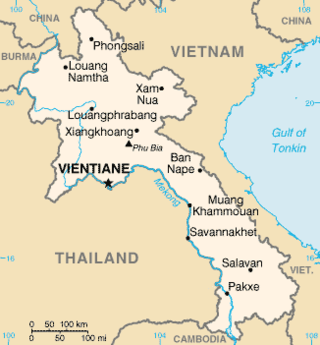
The 1967 Opium War took place in northwestern Laos between February and August 1967; actual fighting took place from 29 July to 1 August 1967. A mule train, led by Burmese militia, carrying 16 tons of opium crossed into Laos to Ban Khwan, where they were attacked by rival drug smugglers from the Chinese Nationalists' Third and Fifth Armies. The intended recipient of the shipment, Royal Lao Army General Ouane Rattikone, bombed both sides while moving in troops to sweep the battlefield. With both Burmese militia and Nationalist Chinese defeated and expelled from Laos, the Lao general confiscated the opium for himself.
The Kuomintang in Burma or Kuomintang in the Golden Triangle were Kuomintang troops that fled from China to Burma in 1950 after their defeat by the Chinese communists in the Chinese Civil War. They were commanded by General Li Mi. It attempted several incursions into Yunnan in the early 1950s, only to be pushed back into Burma each time by the Chinese Communist Party's People's Liberation Army.

The Chinese Association for Relief and Ensuing Services, formerly the Free China Relief Association, is a non-governmental organization headquartered in Taipei, Republic of China (Taiwan). The organization specializes in forced migration, refugee assistance and disaster relief.
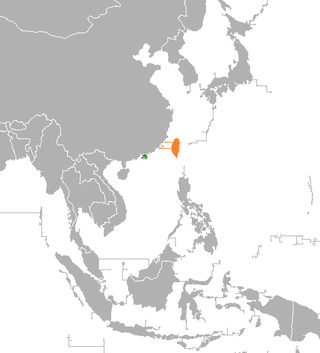
Relations between the government of Hong Kong and the Republic of China (Taiwan) encompass both when the Republic of China controlled mainland China, and afterwards, when the Republic of China fled to Taiwan.

The retreat of the government of Republic of China to Taiwan, also known as the Kuomintang's retreat to Taiwan or the Great Retreat in Taiwan, refers to the exodus of the remnants of the then-internationally-recognized Kuomintang-ruled government of the Republic of China (ROC) to the island of Taiwan (Formosa) on December 7, 1949, after losing the Chinese Civil War in the Chinese mainland. The Kuomintang, its officers, and approximately 2 million ROC troops took part in the retreat, in addition to many civilians and refugees, fleeing the advance of the People's Liberation Army of the Chinese Communist Party (CCP). The CCP, who now effectively controlled most of Mainland China, spent the subsequent years purging any remnant Nationalist agents and bandits in western and southern China, solidifying the rule of the newly established People's Republic of China.















